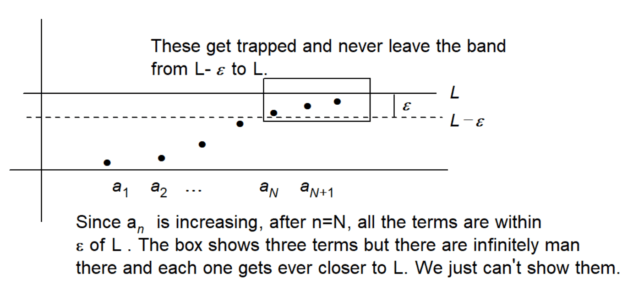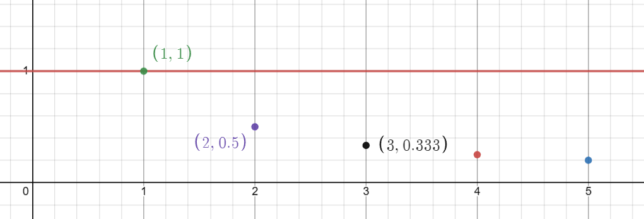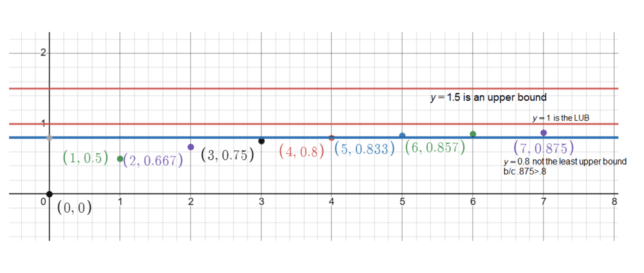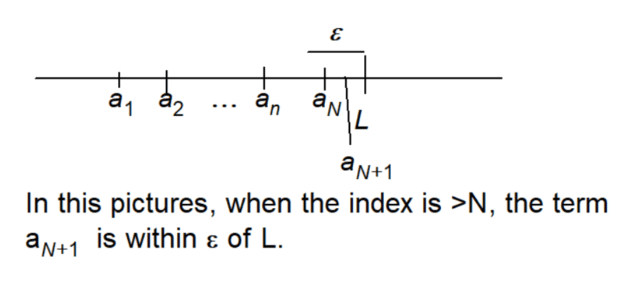Understanding the Behavior of the Sequence aₙ = cos(n)
The sequence defined by aₙ = cos(n) does not follow a simple increasing or decreasing pattern. Instead, it exhibits an oscillatory behavior, “bouncing” between 1 and -1. This behavior is due to the periodic nature of the cosine function, with a period of 2π.
1. Analyzing the Behavior
As n ranges from 0 to π, the cosine function decreases from 1 to -1. Then, as n ranges from π to 2π, it increases from -1 to 1. This pattern repeats every 2π units, creating a “bouncing” effect between 1 and -1.
2. Visualization Suggestion
To mentally visualize the behavior of the sequence, imagine a ball bouncing between two horizontal lines, one at y = 1 and the other at y = -1. The ball’s height represents the value of cos(n) at each step, and it bounces between the two lines, reflecting the oscillatory nature of the sequence.
3. Conclusion
The sequence aₙ = cos(n) does not strictly increase or decrease. Instead, it oscillates between 1 and -1, creating a “bouncing” effect. This behavior is a result of the periodic nature of the cosine function and can be visualized as a ball bouncing between two horizontal lines.
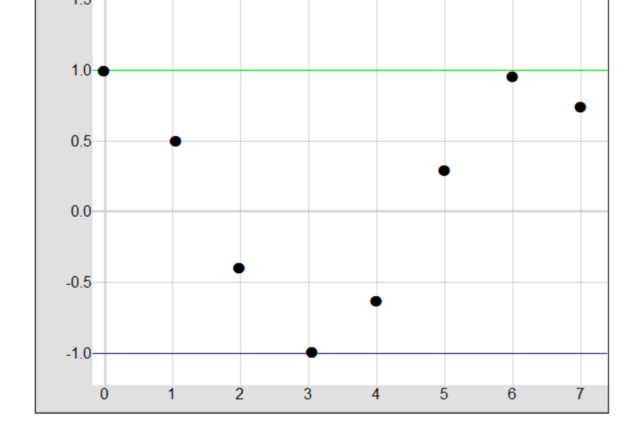
Understanding the Behavior of the Sequence aₙ = n(-1)ⁿ
The sequence defined by aₙ = n(-1)ⁿ exhibits an oscillatory behavior, alternating between positive and negative values. This pattern is due to the alternating sign produced by the (-1)ⁿ term.
1. Analyzing the Behavior
For even values of n, (-1)ⁿ = 1, so the term aₙ = n. For odd values of n, (-1)ⁿ = -1, so the term aₙ = -n. This creates an alternating pattern where the sequence oscillates between positive and negative values, with increasing magnitude.
2. List of Values
- a₁ = -1
- a₂ = 2
- a₃ = -3
- a₄ = 4
- a₅ = -5
- …
3. Visualization Suggestion
To mentally visualize the behavior of the sequence, imagine a zigzag pattern that alternates between the positive and negative y-axis. The magnitude of the zigzag increases as n increases, reflecting the alternating positive and negative values of the sequence.
4. Conclusion
The sequence aₙ = n(-1)ⁿ does not follow a simple increasing or decreasing pattern. Instead, it oscillates between positive and negative values, with the magnitude of the oscillation increasing with n. This behavior can be visualized as a zigzag pattern, reflecting the alternating nature of the sequence.
Understanding the Behavior of the Sequence aₙ = (2 + (-1)ⁿ)/n
The sequence defined by aₙ = (2 + (-1)ⁿ)/n exhibits an oscillatory behavior, but with a pattern that approaches a limit as n increases.
1. Analyzing the Behavior
The sequence alternates between two expressions depending on whether n is even or odd:
- For even values of n, (-1)ⁿ = 1, so the term aₙ = (2 + 1)/n = 3/n.
- For odd values of n, (-1)ⁿ = -1, so the term aₙ = (2 – 1)/n = 1/n.
As n increases, both 3/n and 1/n approach 0, so the sequence oscillates but also approaches 0.
2. List of Values
- n=1: a₁ = (2 – 1)/1 = 1
- n=2: a₂ = (2 + 1)/2 = 1.5
- n=3: a₃ = (2 – 1)/3 ≈ 0.3333…
- n=4: a₄ = (2 + 1)/4 = 0.75
- n=5: a₅ = (2 – 1)/5 = 0.2
- …
3. Visualization Suggestion
To mentally visualize the behavior of the sequence, imagine a wave pattern that alternates between two levels but gradually gets closer to the x-axis as n increases. This captures both the oscillatory nature and the convergence of the sequence.
4. Conclusion
The sequence aₙ = (2 + (-1)ⁿ)/n oscillates between two expressions but also approaches 0 as n increases. This behavior can be visualized as a wave pattern that gradually flattens, reflecting the alternating nature and convergence of the sequence.
Understanding the Behavior of the Sequence aₙ = 2 + (-1)ⁿ/n
The sequence defined by aₙ = 2 + (-1)ⁿ/n exhibits an oscillatory behavior, but with a pattern that approaches a limit as n increases.
1. Analyzing the Behavior
The sequence alternates between two expressions depending on whether n is even or odd:
- For even values of n, (-1)ⁿ = 1, so the term aₙ = 2 + 1/n.
- For odd values of n, (-1)ⁿ = -1, so the term aₙ = 2 – 1/n.
As n increases, both expressions approach 2, so the sequence oscillates but also approaches 2.
2. List of Values
- n=1: a₁ = 2 – 1/1 = 1
- n=2: a₂ = 2 + 1/2 = 2.5
- n=3: a₃ = 2 – 1/3 ≈ 1.6667…
- n=4: a₄ = 2 + 1/4 = 2.25
- n=5: a₅ = 2 – 1/5 = 1.8
- …
3. Visualization Suggestion
To mentally visualize the behavior of the sequence, imagine a wave pattern that alternates between two levels but gradually gets closer to the horizontal line y = 2 as n increases. This captures both the oscillatory nature and the convergence of the sequence.
4. Conclusion
The sequence aₙ = 2 + (-1)ⁿ/n oscillates between two expressions but also approaches 2 as n increases. This behavior can be visualized as a wave pattern that gradually flattens, reflecting the alternating nature and convergence of the sequence.
Understanding the Behavior of the Sequence aₙ = (1 – n)/(3 + n)
The sequence defined by aₙ = (1 – n)/(3 + n) can be analyzed by looking at the expression, calculating terms, and taking the limit as n approaches infinity.
1. List of Values
- n=1: a₁ = (1 – 1)/(3 + 1) = 0
- n=2: a₂ = (1 – 2)/(3 + 2) = -0.2
- n=3: a₃ = (1 – 3)/(3 + 3) = -0.3333…
- n=4: a₄ = (1 – 4)/(3 + 4) ≈ -0.4286
- n=5: a₅ = (1 – 5)/(3 + 5) = -0.5
2. Taking the Limit
To find the limit of the sequence as n approaches infinity, we can analyze the expression:
As n grows, the terms 1 and 3 become insignificant compared to -n and n, so we can consider the expression:
\( \lim_{n \to \infty} \frac{-n}{n} = -1 \)
3. Conclusion
The sequence aₙ = (1 – n)/(3 + n) decreases and approaches -1 as n increases. The pattern of the sequence and the simple limit calculation confirm this behavior.


